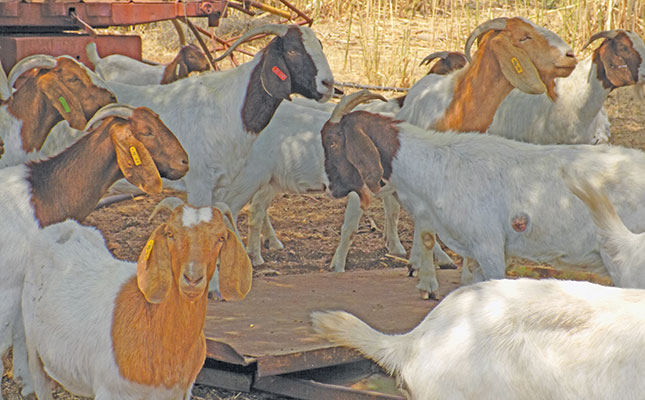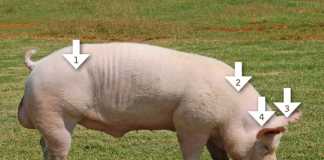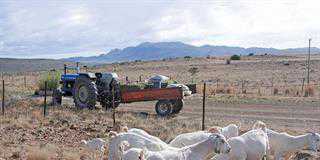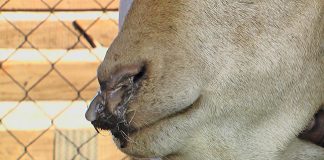
Photo: FW Archive
The improved Boer goat originated in the Eastern Cape through selection from the indigenous and European goat breeds.
Around 1930, breeders in the Bedford and Somerset East areas started an intensive breeding and selection programme to improve their goats for local conditions.
Their aim was to breed a more uniform animal with excellent meat characteristics, growth ability and fertility, but without losing its hardiness and adaptability. The South African Boer Goat Breeders’ Association was established in 1959 to further improve the breed, establish breed standards, develop methods of training and inspection, and to promote and market the breed.
Description
The Boer goat is a large-framed, red-headed animal with a white body and short, smooth, glossy hair. The ideal is an average-sized, heavy goat for maximum meat production. A desirable ratio between length of leg and depth of body should be achieved at all ages.
The goat has a fine head, lob ears, round, backward-curving horns, and a loose, supple skin with folds, especially in rams. The ewe must be feminine, and wedging slightly to the
front (a sign of fertility). The ram should be heavier in the head, neck and forequarters, and must be masculine.
A variety of colour patterns occurs, but the ideal is a white goat with a red head and ears, a white blaze and strongly pigmented skin. Shading between light and dark red is permissible.
Production norms
The Boer goat, a non-seasonal breeder, is suitable for most management systems. Multiple births are the norm, with triplets and quadruplets being fairly common. The ovulation rate ranges from one to four eggs per ewe with an average of 1,7.
- Age at first breeding: six months.
- Number of kids born per number of ewes kidded: 1,54.
- Number of kids weaned per number of ewes kidded: 1,2.
- 100-day weaning weight: ram kids: 27kg; ewe kids: 24kg.
Source: Snyman, MA. 2014. ‘South African goat breeds: Boer goat. Info-pack ref. 2014/002. Grootfontein Agricultural Development Institute.












